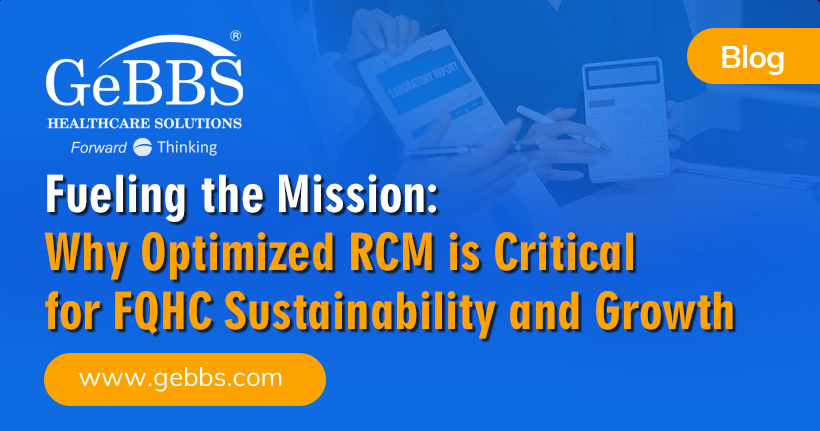With new regulations and reforms in place, traditional methods of healthcare revenue cycle management (RCM) have become outdated. Many healthcare organizations struggle to maintain strong revenue in the face of value-based care reimbursement.
The good news is that there are ways that healthcare providers can manage their workflow efficiency and improve their financial stability. There are plenty of tools and practices that can help you optimize your revenue cycle, from the time a patient calls to schedule an appointment to receiving reimbursement from payers.
Here are some top ways to optimize and increase your revenue cycle to provide a better patient experience and improve your profits.
1. Use Analytics to Understand Your Revenue Cycle
You can’t improve what you don’t understand. The right digital tools can give you the analytics to fight inefficiencies and inaccuracies that plague traditional paper processes. To optimize your revenue cycle management with analytics.
The right analytic tools will highlight which payment channels patients use so you can find potential opportunities for collection improvement. It can also pinpoint weaknesses in your coding or revenue cycle where mistakes are commonly made so you can improve your processes.
The right solution will show performance trends and metrics to help you allocate resources effectively and drive crucial business decisions. It will provide you with helpful visuals to get deeper insights into what is going on with your revenue cycle management.
2. Automate Eligibility Verification
Financially clearing your patients as early as possible is a critical way to streamline reimbursements, reduce denials and ensure you have the correct information. However, it can be time-consuming for staff members to secure pre-authorization and verify eligibility. Automation takes this task off their plate without compromising quality. Your organization can outsource a common issue from your billing process.
Automating verification can have a positive impact on office productivity. It will not only ensure that your patients receive the care and attention they want but also improve employee morale as they find their work more meaningful. By reducing the repetitive and monotonous work such as verifying eligibility with insurers, staff can spend more time providing a valuable human touch to patient interactions.
3. Leverage Preregistration
Inaccurate or missing information is a common source of denials for providers. Up-to-date and accurate patient information is a critical step for reducing insurance claims denials, but collecting it can be time-consuming for staff. Offering patients the ability to pre-register online or with their mobile devices can help solve this issue. Allowing patients to pre-register is vital to correctly collect the most important information before their appointment.
Enabling patients to enter their information ensures that everything is accurate and verified by the patient and saves staff time by cutting down on their administrative tasks at check-in. It can also improve collections by offering patients the option to pay upfront with online methods.
In addition to accuracy and efficiency, virtual pre-registration cuts down on paper intake forms, which makes providers more vulnerable to HIPAA violations. A secure online form ensures that information remains safe and conveniently accessible for staff and patients.
4. Use Claims Scrubbing
Modernizing the claims process will help you ensure that the payment requests you send to insurers are complete and accurate. It will reduce denials, leading to faster payments and less burden on staff to manage them. You can reduce the workload and optimize your revenue cycle management with proactive processes.
Claim scrubbing is a process that ensures that all submitted claims are correct and complete. It is also a task that can be automated, further reducing the tedious jobs for your staff. Claims scrubbing no longer needs to be a long, manual job that slows down payments and is prone to errors. Automation ensures that it is done quickly and accurately.
5. Outsource Billing
Payment delays are a challenge in healthcare: 49% of providers said they couldn’t collect balances of $400 or more in 30 days. Outsourcing your medical billing practices is one of the most effective ways to optimize your revenue cycle. It makes the process efficient and easy and removes the burden from your staff.
Outsourcing billing can help improve your payments and ensure that you receive them promptly. For example, they can pinpoint optimal times to call patients to get contact, increasing the likelihood of payment. Increasing their propensity to pay will help lower your cost burden and improve your overall revenue cycle.
6. Follow Up on Claims
It’s critical to follow up on claims to ensure that your organization is paid for the services it renders to patients. While many providers pay attention to denied claims, ignored claims also happen. Whether the payer needs more information they didn’t communicate, your claim got lost in the shuffle, or just plain ignored, creating a process for following up is vital for maximizing payments.
7. Streamline Claim Denials
Claim denials are a big problem for healthcare providers: 76% of hospital heads said it was their leading revenue cycle management challenge. A study last year showed that payers denied 18% of in-network claims on average, and some plans were as high as 80%. Organizations miss out on significant revenue without a way to manage these denials.
While it’s impossible to avoid denials altogether, there are ways to minimize them with planning and attention. The right automation will help ensure that claims are submitted correctly, including the right medical codes, the first time and avoid denials in the first place.
Following up on denied claims is one of RCM’s most critical — and overlooked — aspects. Denied claims often get lost and aren’t resubmitted, resulting in necessary missed revenue. This is another crucial opportunity for automation tools that flag denials for review and resubmission. It helps to ensure no serious disruptions to your revenue cycle and that nothing gets lost in the shuffle.
Maximize Your Revenue Cycle with the Right Tools
Improving your revenue cycle management processes is critical for enhancing your profits without hurting customer care. In fact, many of these processes will improve the patient experience and enable your staff to provide better attention and care to their needs. Understanding the right tools, getting deeper insights, and strategically automating tedious tasks will help improve your patient care, staff morale, and bottom line. Reach your organization’s full potential and maximize your revenue with a solution built with your needs in mind. GeBBS Healthcare Solutions has the tools you need. Contact one of our experts today at gebbs.com to see how GeBBs can help optimize your revenue cycle management processes.
Reach your organization’s full potential and maximize your revenue with a solution built with your needs in mind. GeBBS Healthcare Solutions has the tools you need. Contact one of our experts today at gebbs.com to see how GeBBs can help optimize your revenue cycle management processes.






